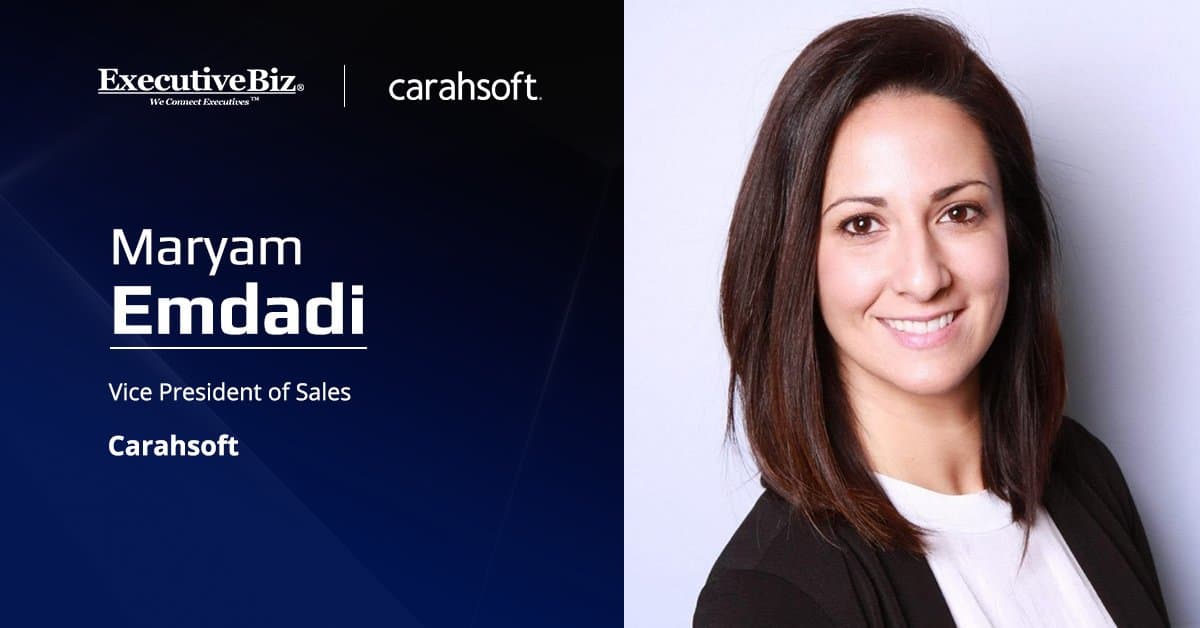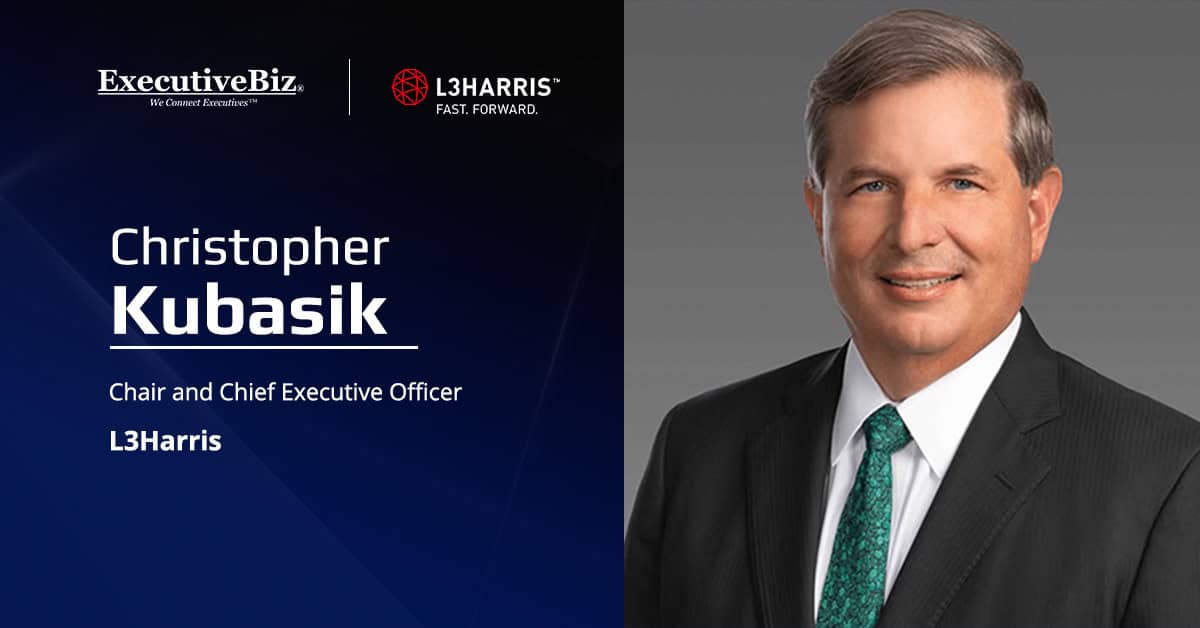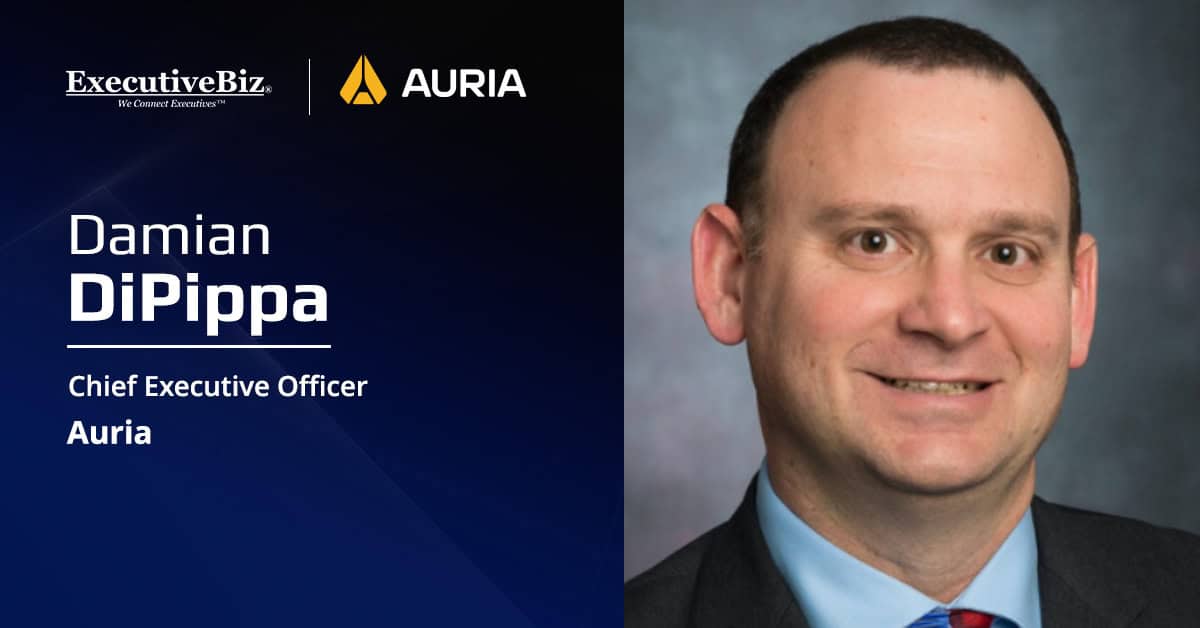Artificial intelligence is raising the stakes for federal infrastructure and exposing just how much aging hardware is holding agencies back. Cloud and software-as-a-service may dominate conversations, but in the field, it’s physical infrastructure that determines whether innovation can deliver.
Maryam Emdadi, vice president of sales at Carahsoft, sees that reality up close. Through her work across Dell, RSA, Tenable and 5G portfolios, she partners with agencies to move beyond routine hardware refreshes to start thinking of infrastructure as a strategic advantage.
In a recent conversation with ExecutiveBiz, Emdadi shared her insights on lifecycle planning, cloud repatriation, AI-ready PCs and why the success of digital transformation depends on what’s happening beneath the surface.
ExecutiveBiz: Agencies have spent years moving to the cloud but lately, hardware seems to be back in the conversation. Why are we hearing more about infrastructure again?
Maryam Emdadi: There’s no question that various cloud mandates have delivered a lot: agility, scalability and cost-efficiency in many cases. But in that push, hardware became the quiet workhorse in the background. What we’re seeing now is a reality check. Agencies have big plans for all sorts of cutting-edge tech, but their aging infrastructure doesn’t have the capabilities for those workloads. AI at the edge, secure offline processing or compute-heavy missions like those in the defense space — they’re realizing they need more than the cloud.
ExecutiveBiz: What’s changed in the way agencies think about the cloud? Is it a reversal or something more nuanced?
Emdadi: Definitely more nuanced. This isn’t about abandoning the cloud; it’s about recognizing that not every workload belongs there. We’re seeing what’s often called cloud repatriation — agencies moving specific workloads back on-premises because of cost, latency, or data sensitivity. It’s a recalibration. Agencies are learning to match workloads to the right environments. That means putting infrastructure planning back on the table.
ExecutiveBiz: Where does modern hardware fit in today’s innovation landscape?
Emdadi: It really is the launchpad. When we talk about things like generative AI, edge computing, or autonomous systems, none of it works without the right hardware underneath. That part of the equation doesn’t always get the spotlight, but it’s what makes the whole thing possible.
We’re having more and more conversations with agencies about hybrid models, edge deployments and how to modernize what’s already on-prem as a forward-looking part of the architecture.
As agencies look for practical ways to put AI to work, many are realizing the cloud isn’t always the right fit. That’s where AI-optimized PCs come in. These devices can run workloads offline, use high-performance GPUs for real-time inference and store sensitive data locally. That means teams can keep working, even in secure or disconnected environments. We’re seeing companies like Dell roll out edge-ready devices built specifically for these kinds of mission needs.
ExecutiveBiz: Budget constraints are a constant in government IT, and infrastructure upgrades can be a heavy lift. Are you seeing new procurement models or strategies that help agencies modernize infrastructure without blowing their budgets?
Emdadi: Absolutely. Flexible procurement is a big part of this shift. Agencies are looking for ways to align infrastructure spending with actual usage — just like they’ve learned to do with cloud. That’s where consumption-based models come in. Vendors such as Dell, and others let agencies scale hardware resources as needed and pay only for what they use. It’s a way to get modern performance without a huge upfront investment, which makes it easier to fit into federal budget cycles.
These programs allow agencies to pivot more easily and modernize incrementally. At Carahsoft, we work closely with our partners to help agencies navigate those choices and build them into broader strategies, including AI, zero trust or edge deployments.
ExecutiveBiz: What advice do you have for IT and mission leaders rethinking their infrastructure strategy in 2025?
Emdadi: Start with lifecycle planning. Understand what’s in your data center, how old it is, and whether it can support the workloads you’re running. How’s it handling what you’re doing today? How about tomorrow?
Too often, infrastructure decisions are reactive. The goal isn’t to rip and replace: agencies should refresh with purpose. Build the runway first, then launch the mission. Whether that’s deploying AI at the edge or preparing for post-quantum computing, the right hardware makes it all possible.
At Carahsoft, we’re working with agencies to take a step back, assess what they really need and build a roadmap that aligns infrastructure to long-term goals. The agencies making the most progress are the ones treating this as a strategic process, not just a refresh cycle.
ExecutiveBiz: What’s next for Carahsoft in this space?
Emdadi: We’re continuing to partner across the ecosystem, from OEMs to innovators in edge AI and secure storage. Events like the 5G Summit and Dell Technologies Mission Ready IT Federal Reception in August 2025, and the Innovation Summit 2025 in October bring these partners together with agencies looking for real solutions. It’s all about readiness. Our job is to make sure agencies have the infrastructure to match their ambition.





